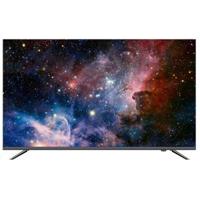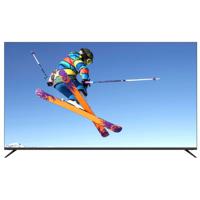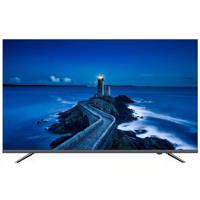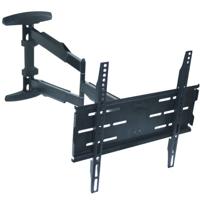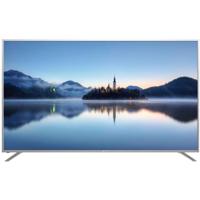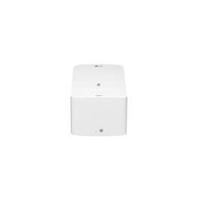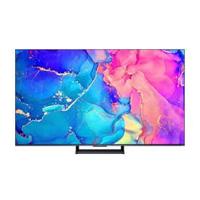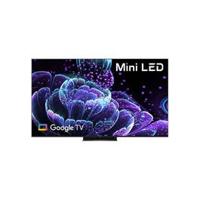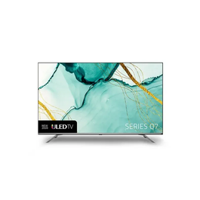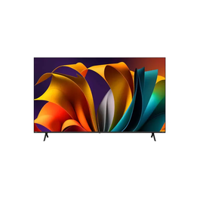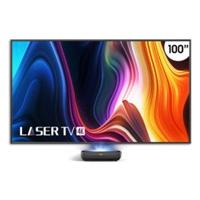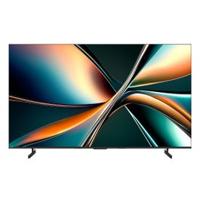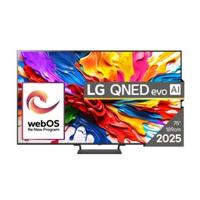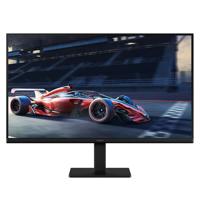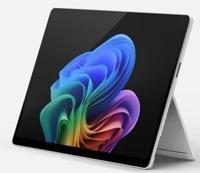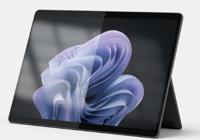About LED TVs
Have you ever encountered a gigantic flat-screen TV that is barely an inch thick? If you have, then you’ve seen an LED TV . They are everywhere these days. With 16:9 ratio, digital signals and better picture quality, they take your viewing experience a notch higher.
Captain, Henry Joseph Round, in 1907, recorded the first-ever occurrence of solid-state diode emitting light. Of course, this was a phenomenal discovery because this moulded the history of electronics . However, this discovery did not look practical at that time. That’s why it remained no more than an academic curiosity at that time. Later on, in 1962, Nick Holonyak , Jr. at General Electric invented the first practical light-emitting diode. Further down the line, in the 1960s, LED televisions became commercially available, although they were available in only one colour – red. However, since then, there has been no looking back for the LEDs. You can now find several models of LED TVs. Which is also the reason why buying them is a bit challenging unless you’re aware of them in detail. This article aims to enlighten you with important facts about LEDs and make your buying process easy.
Five essential things you need to know about the LED TVs
By now, you must have figured out that the term LED stands for ‘light-emitting diode’. Therefore, a LED display is a kind of monitor display where the light source comprises of light-emitting diodes. This is now a popular technology today, and many electronic devices work on this principle. Of course, when you see these LED TVs working, you wonder exactly how these work. To answer that, you might have to take a tour through the following important things. In other words, to get a good understanding of how an LED display works, you need to understand them in various contexts. So, keep reading to find out.
A full HD LED TV is not a new kind.
LED TVs and LCDs are together forever. Why? Because, essentially, an LED TV is just a special type of LCD. Unlike LCD, the backlight of LED comes in LEDs rather than CCFLs. This is the core principle of LED TV technology. That’s why these televisions are far more efficient than their CCFLs counterparts. They are also a lot smaller. It is because of their smaller size that the LED TVs can afford to be so thin when compared to other types. Moreover, when it comes to the picture quality, there is absolutely no difference between an LED TV and LCD. Well, to ascertain this, engineers tried to design a full HD LED TV where the screen itself comes with LEDs. To their surprise, this turned out to have much better picture quality than the LCD TV. However, the fact remains that LEDs are just another type of LCDs.
The LED TV comes with two backlight configurations.
Of course, the LED TV is a technology used in LCD TV, and typically there are two of their types, namely – edge lighting and full-array lighting. The term edge lighting is pretty much self-explanatory. In this type, a series of LED backlights position along the outside edges of the screen. From here the light is dispersed across the screen. Now, this means that that the LED/LCD TVs can be very thin. Even though this offers better results than CCFL, the black levels aren’t deep and up to the mark. Alternatively, to take full advantage of the LED lighting technology, some manufacturers use full-array LED backlighting. Typically, you’ll find many rows of LEDs behind the entire surface of the screen. Although this makes the TV bulky, the LEDs provide even brighter colours and greater contrast.
LED TV with screen mirroring is unique
It is quite intriguing how this new feature in LED TVs allows you to stream content from your smartphone or laptop onto your television. To put it, screen mirroring takes the full content displayed on your computer, tablet or smartphone and sends it to the external screen. You generally do this via a cable or wireless connection. For example, imagine that you are launching an application, editing a text file or visiting a webpage. Well, while screen mirroring, you’ll precisely see all of them replicated on your television screen. Screen mirroring in the LED TV enables you to benefit from PowerPoints keynote’s presenter mode. This allows your audience to view your presentation on a larger screen, while you watch it on your small screen along with any audio notes.
Expensive LED beginnings now plunged to low price LED TV.
Earlier, the LEDs were mainly used in seven-segment displays and to replace incandescent indicators. This indicates that at first, they were used only in most expensive equipment. For example, as electronic test equipment and laboratory equipment. Gradually, with time, their pr ices plunged low, especially when people started using them in radios, calculators, telephones, watches and yes of course televisions. Besides, red LEDs weren’t very bright. Therefore, people used them as indicators too . However, later, more colours came in and were used in various appliances and equipment. As technology progressed, the luminosity of the LEDs increased. Now they are bright enough to be used as backlights in an LED TV . This has marginally decreased the LED TV price . Now you can find economically cheap LED TV all over the world.
The advantages and disadvantages of LED TV
Indeed, LEDs are one of a kind. But, like every other electronic device, it comes with its own merits and demerits. Let’s take a look at them. For starters, the picture quality is a significant advantage. You’ll be able to see better picture quality if you use LED televisions. And since the LED TV uses LED technology, the brightness is significantly increased. Moreover, the contrast is much better on LED TV as compared to the LCDs. They also have a longer lifespan. However, as compared to other TVs, LEDs do not have a better contrast ratio. Also, since they have more dimensional depth, it is quite tricky to mount them. Furthermore, with such distinct features, it is apparent that LED TV is expensive than their LCD counterparts. It is almost twice the cost of LCDs.
Tips on how to buy LED TVs online
So, are you ready to buy a new LED TV ? Of course, you want it to be good. Well, if this is your first time buying the LEDs , then the considerations go way beyond price. You may want to look for some other features too. Below enlisted are four other crucial factors that’ll affect your LED TV buying decision. Naturally, not everything will be similar for every buyer, but if you consider the below points, you’ll be happy with your result.
- Screen size matters – Ideally, it is the bigger, the better. If you are investing, primarily you should be satisfied with its size. However, the size and space of the room where you intend to place your television play a vital role. Remember not to buy an oversized TV compared to your wall.
- Check out the picture quality – A blurry slow-moving picture, with glitches, spoils your entire viewing experience. That’s why you need to look for the picture quality of the television. Look for the colours, the contrast and the brightness. All of them play a significant role in determining picture quality.
- Assess the resolution – Curve LED TV is just a waste of money and so are the 3D TVs unless you want to use them specifically. Because usually, we do not use them to its maximum potential. However, when you are buying larger size LEDs , it is best to opt for the ones with 4K resolutions. It is much clearer, sharper and brighter.
- Look for unique add-in features – Look for any peculiar features. For example, in the case of LED TV, you can perform screen mirroring. Moreover, you could also Google Chromecast your PC with your TV and enjoy streaming videos and pictures on your LED TV , that is displayed initially on your laptop/PC/mobile phones.
Many of today’s advanced technology displays have roots in earlier years. The LEDs are the living proof of that. They are one of the advanced versions of previous LCDs. Well, whatever it may be, they are one of the unique television technology . That’s because they offer you the comfort of watching your favourite shows with much more clarity and precision. We hope this guide has covered the essential aspects of an LED TV and has provided you with information that’ll make your TV buying hassle-free.
Question & Answer
Can LED TV screen be repaired?
Of course, you can repair them. However, the procedure isn’t that simple. You must first start with the diagnostics. Figure out what exactly is wrong with your LED TV screen first. You could very well do it. However, it is best to seek a professional if the damage is severe. Also, if you have broken TV, it is best to buy a new one than repair it.
Can LED TV be used as a monitor?
Television screens and monitors are fundamentally similar and use mostly the same technology to drive the panels. But the noticeable difference is their size. LED s are generally around 40 inches and more. However, that’s not the case with the monitors. They usually sit about 24-27 inches. Though you sue TVs for tuning in and monitors for interactivity, you can use them alternatively as per the requirements.
Which LED TV should I buy?
LED TVs are versatile and hence come in different makes and models. They offer you excellent viewing experience with their unique features. Check out the LED s from brands like Samsung , Sony, LG , Haier, Panasonic , Videocon, Skyworth, Philips, TCL, and Micromax . They offer some high-quality LED television with sleek designs.
How are LED TV screens made?
Typically, an LED TV is a different version of LCDs. Therefore, the process of making them is almost similar. Manufacturers start with building the LED screens first. They use two thin glass sheets that are polarized and attached. The y coat the front layer with colour filters, and the polymer contains individual liquid crystals. Three filters – red, green and blue are used for each pixel. Also, there are two backlighting techniques edge and full array.
So, wondering where to start? Just visit Shops.ae and you’ll know. It is the best product search en g ine out there that features some of the fantastic collection of LED TVs. And the best part, you get to buy them from 500+ online stores like Microless, Menakart , Jumbo , and many more. You’ll also find a high-quality LED TV for sale .



